Quantitative Aptitude Questions with Answers and Solution for SSC CGL- Mock Test of Maths MCQs set for online practice of upcoming Competitive exams.
Subject : Quantitative Aptitude (Mathematics)
Medium : English
Level : SSC CGL
All type Questions with Solution
As per latest exam pattern and syllabus
Set of 25 Questions – New Questions practice Set in Every Attempt
Results
#1. At an election there were two candidates. A candidate got 38% of votes and lost by 7200 number of votes. The total number of valid votes were :

#2. One man or two women or three boys can do a piece of work in 88 days. One man, one women and one boy will do it in :
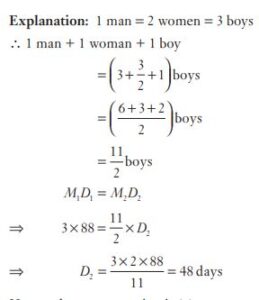
#3. A man borrowed some money from a private organization at 5% simple interest per annum. He lends 50% of this money to another person at 10% compound interest per annum and thereby the man made a profit of Rs 3205 in 4 years. How much did the man borrow?
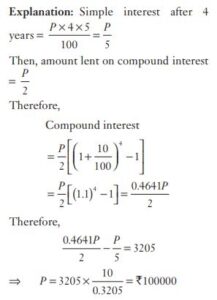
#4. Two successive discounts of 10% and 5% is given on a bill of Rs 110. Find the net amount of money payable to clear the bill. (Answer to the nearest rupee)

#5. The ratio of the length of a school ground to its width is 5 : 2. If the width is 40 m, then the length is :
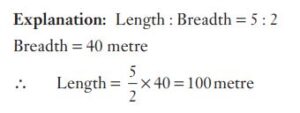
#6. The mean of 20 items is 55. If two items such as 45 and 30 are removed, the new mean of the remaining items is :

#7. Two numbers are in the ratio 2: 3. If 20% of the smaller number added to 20 is equal to the sum of 10% of the larger number and 25, then the smaller number is :

#8. Given that 12 + 22 + 32 + … + 102 = 385, the value of 22 + 42 + 62 + … + 202 is
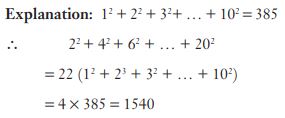
#9. If I purchased 11 books for Rs 100 and sold 10 books for Rs 110, the percentage of profit per book sold is :

#10. Divide Rs. 7500 among A, B and C such that A’s share to B’s share is in the ratio of 5 : 2 and B’s share to C’s share is in the ratio 7 : 13. How much will B receive?

#11. Pipe A can fill a tank in 4 hours and pipe B can fill it in 6 hours. If they are opened on alternate hours and if pipe A is opened first, in how many hours, the tank shall be full?
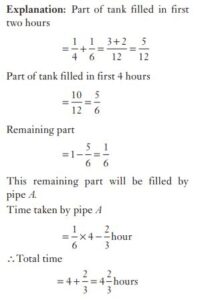
#12. The compound interest on a certain sum of money at a certain rate for 2 years is Rs 40.80 and the simple interest on the same sum is Rs 40 at the same rate and for the same time. The rate of interest is :
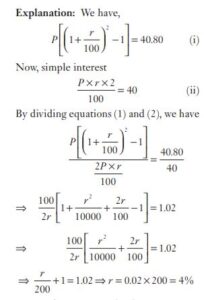
#13. The ratio of cost price and selling price is 5 : 4, the loss percent is :

#14. The number 96 – 11 when divided by 8 would leave a remainder of
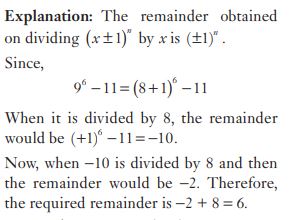
#15.  is equal to
is equal to
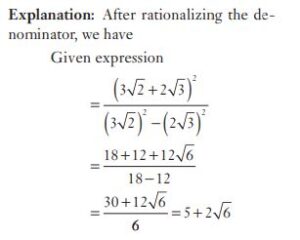
#16. The product of two 2–digit numbers is 2160 and their HCF is 12. The numbers are

#17. 4 boys and 3 girls spent Rs.120 on the average, of which the boys spent Rs.150 on the average. Then the average amount spent by the girls is:

#18. The LCM of two numbers is 1920 and their HCF is 16. If one of the number is 128, find the other number.
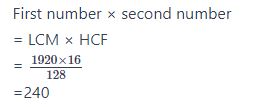
#19. A man rows down a river 15 km in 3 hours with the stream and returns in  hours. The rate at which he swims 26 km downstream is :
hours. The rate at which he swims 26 km downstream is :
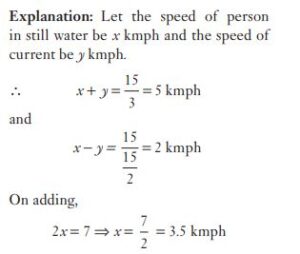
#20.
If W1 : W2 = 2 : 3 and W1 : W3= 1 : 2 then W2 : W3 is
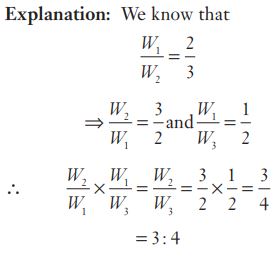
#21. 31% of employees pay tax in the year 2008. The number of non-tax paying employees are 20,700. The total number of employees is :

#22. If 80 persons can finish a work within 16 days by working 6 hours a day, the number of hours a day, should 64 persons work to finish that very job within 15 days is :
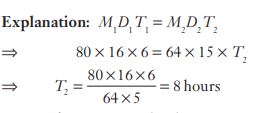
#23. A grocery dealer cheats to the extent of 10% while buying as well as selling by using false weight. What is his increase in the profit %?

#24. Two boats A and B start towards each other from two places, which is 108 km apart. Speed of the boat A and B in still water are 12 km/hr and 15 km/hr respectively. If A proceeds down and B up the stream, they will meet after how many hours?
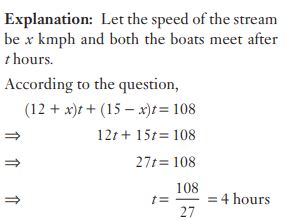
#25. By selling a tape-recorder for Rs 1040 a man gains 4%. If he sells for Rs 950, then his loss will be :

Thank you so much